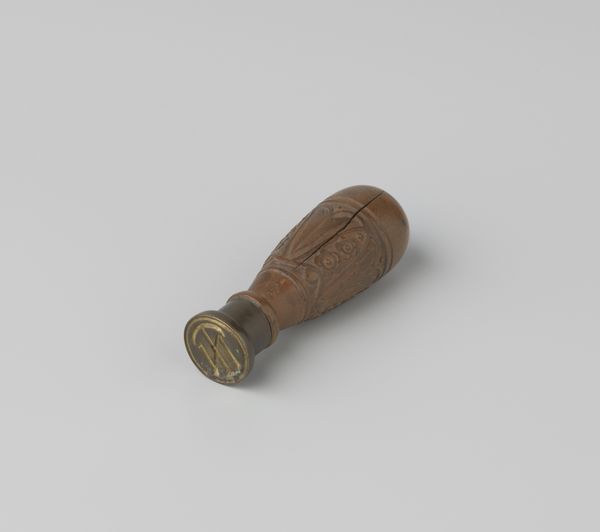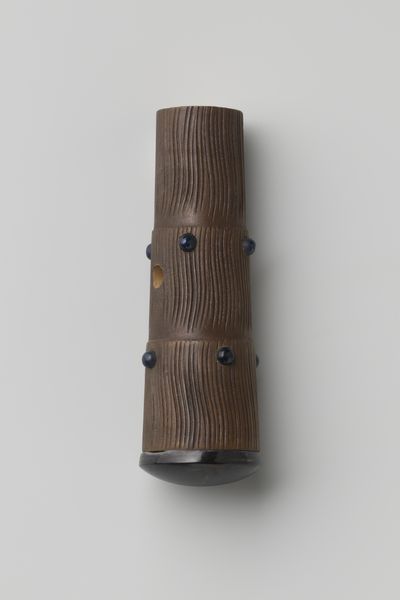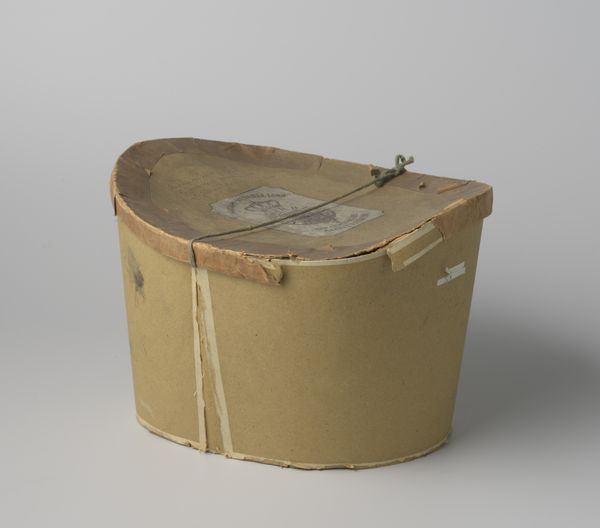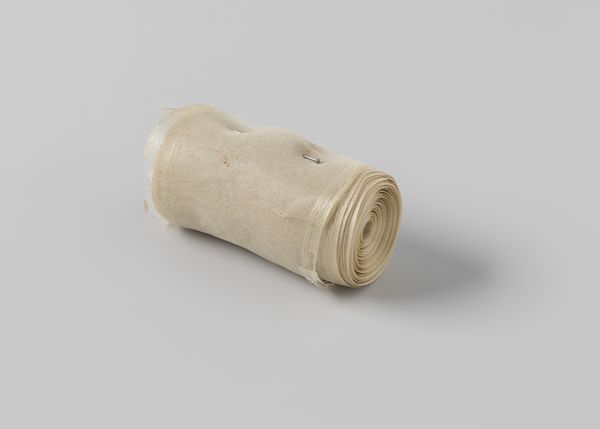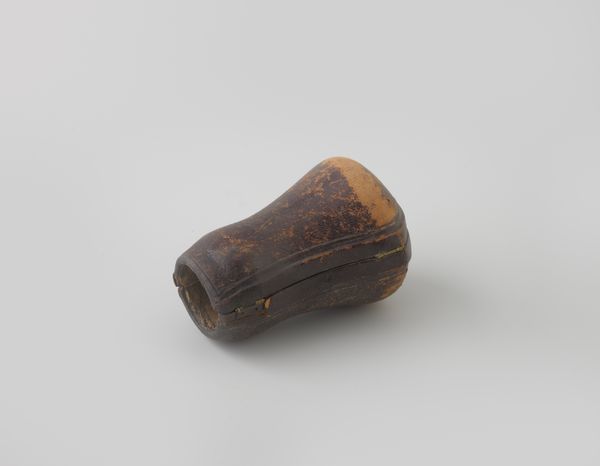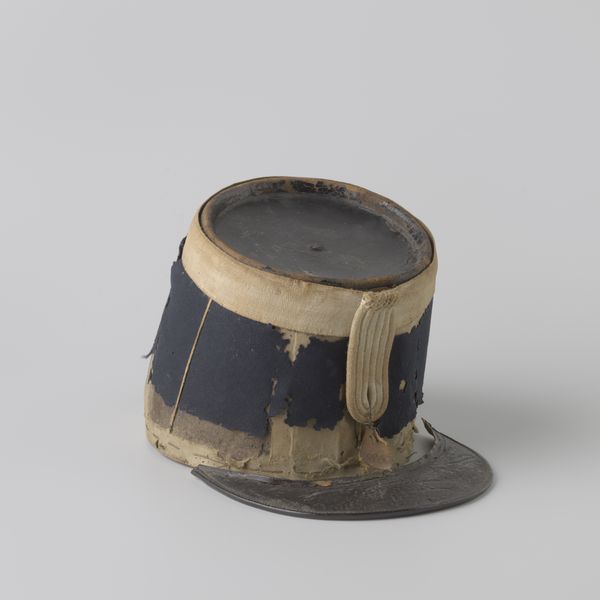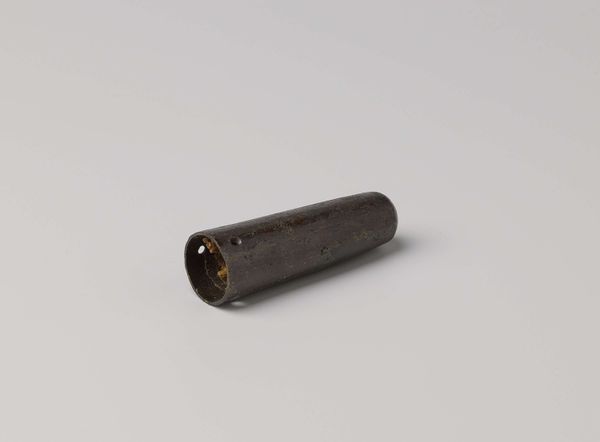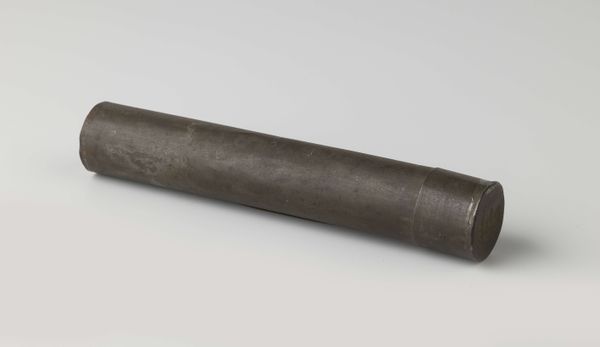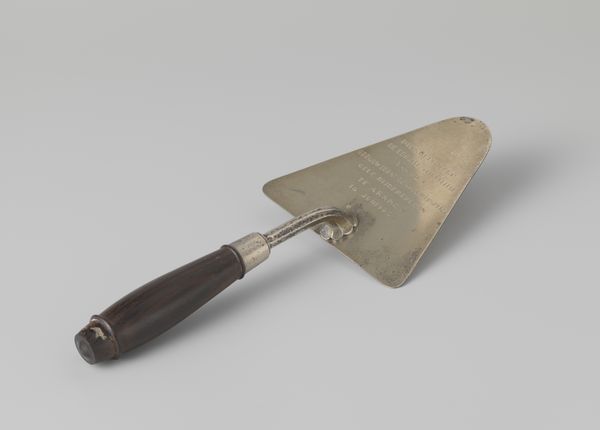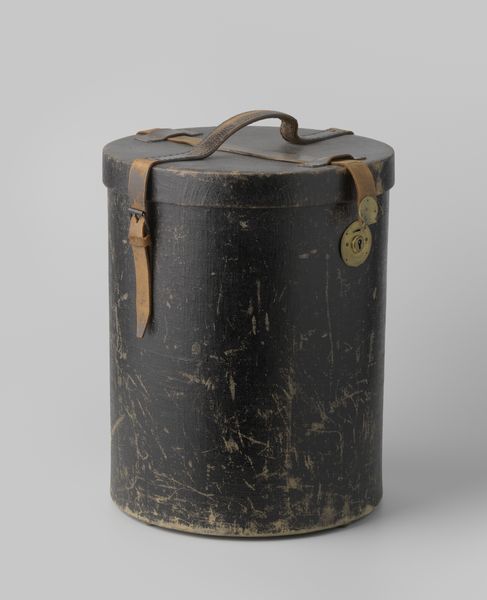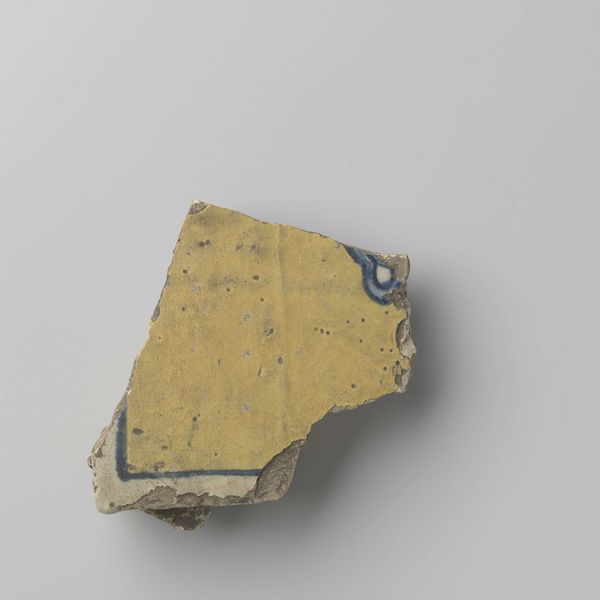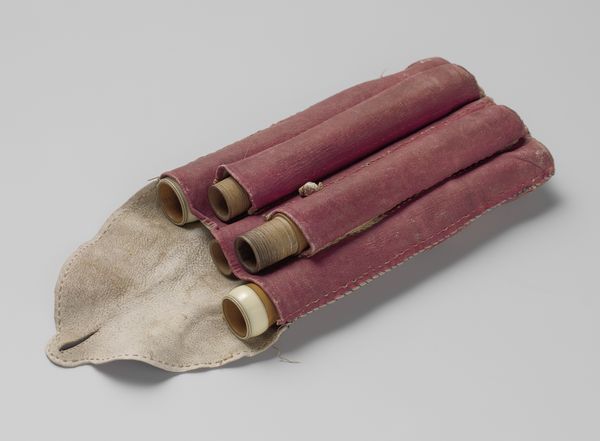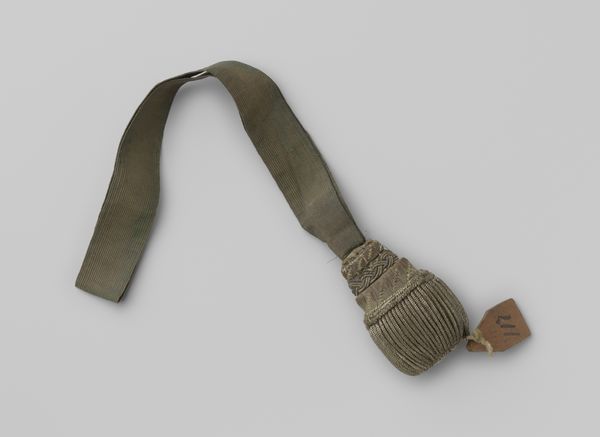
fibre-art, textile
#
fibre-art
#
textile
#
decorative-art
Dimensions: width 72 cm, height 26 cm, depth 67 cm, width 57 cm, diameter 16 cm
Copyright: Rijks Museum: Open Domain
Editor: We're looking at a textile piece called "Mantelzak toebehoord hebbende aan A. Rinkes," or Mantle bag belonging to A. Rinkes. It's from around 1800 to 1830. It's essentially a dark textile cylinder held together by straps. It feels utilitarian but also strangely intimate. What stands out to you about this piece? Curator: It's intriguing how a mundane object like this offers a portal into the past. The bag itself, likely for carrying a coat or cloak, speaks to a time when travel necessities differed greatly. But beyond its function, consider the implications of its existence within the social hierarchy. Who was A. Rinkes? Did their social standing influence the bag's construction and materials? Editor: That's a good point. I hadn’t considered the social aspect. I was just thinking about travel and comfort. Curator: Exactly. Examining objects like this allows us to dissect the history of daily life. The very act of preserving such an item implies a certain level of importance, both personal and perhaps familial. How do we interpret the “IO” inscribed? A unit? It would be fascinating to understand its purpose within a broader socio-political framework. Museums today shape what we consider worthy of preserving. This piece challenges those notions. What makes us value it? Editor: Maybe it's the connection to an individual, A. Rinkes, even if we don't know who they were. Knowing someone carried this bag creates a strange sense of intimacy. Curator: Precisely! And isn't that intimacy, that whisper of a past life, what draws us to these seemingly simple objects? It reminds us that art and artifacts aren't always about grand pronouncements, but often about the quiet stories woven into the fabric of everyday existence. Editor: I guess it's about looking at the everyday as a record of history and personal experience. It’s definitely shifted how I think about value and preservation.
Comments
No comments
Be the first to comment and join the conversation on the ultimate creative platform.
